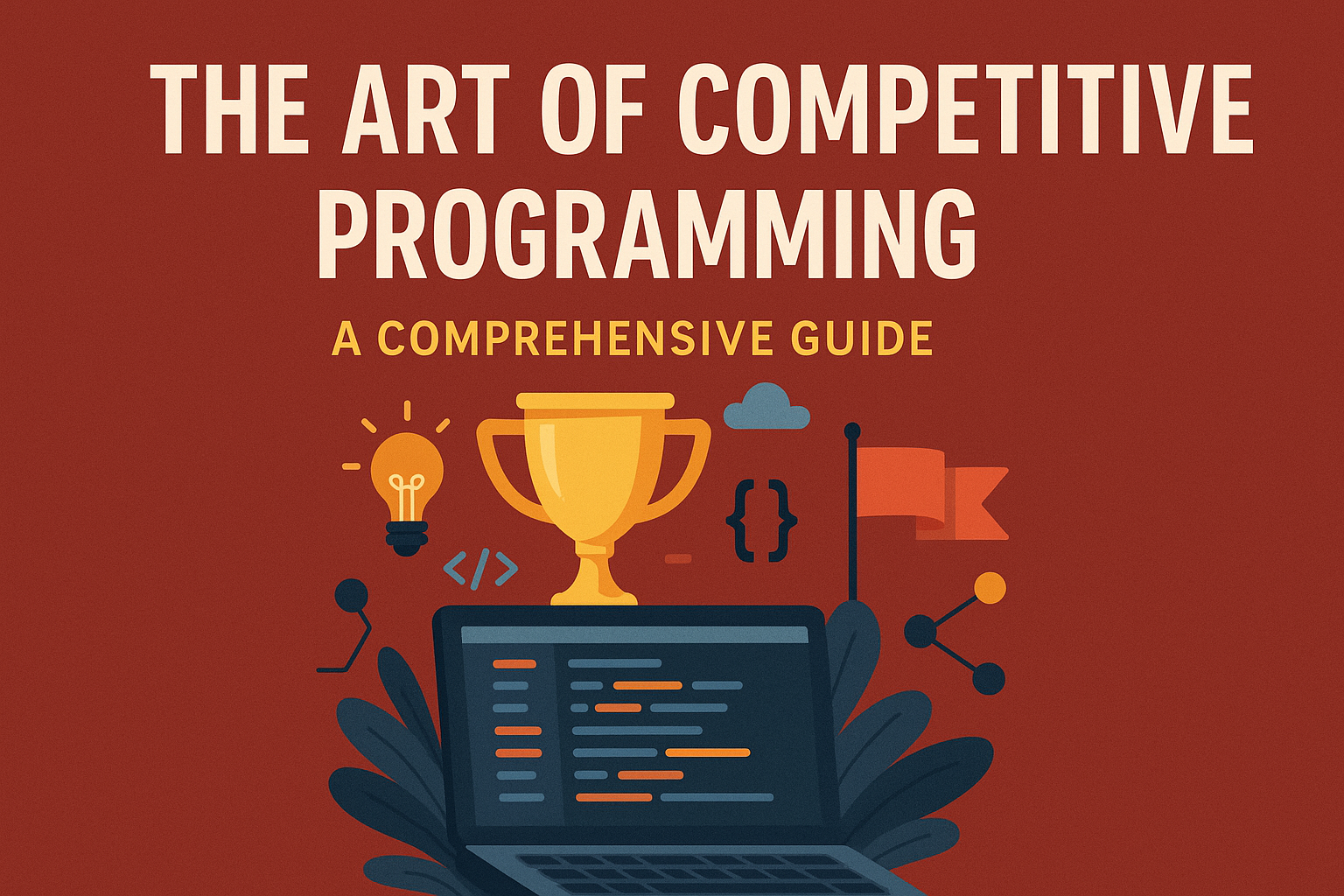The Art of Competitive Programming: A Comprehensive Guide
June 7, 2025 • 12 min read

Competitive programming has become one of the most intellectually stimulating activities for developers worldwide. It combines algorithmic thinking, efficient coding, and problem-solving skills in a high-pressure environment. Whether you're aiming for the International Collegiate Programming Contest (ICPC), Google Code Jam, or just want to improve your problem-solving abilities, this guide will help you navigate the exciting world of competitive programming.
What is Competitive Programming?
At its core, competitive programming is a mind sport where participants solve algorithmic problems within a limited time frame. These contests typically require you to:
- Understand complex problem statements
- Develop efficient algorithms to solve them
- Implement these algorithms without bugs
- Optimize for both time and space complexity
- Test and debug your solutions
The problems range from simple implementation tasks to complex algorithmic challenges that might require knowledge of advanced data structures, dynamic programming, graph theory, and more.
Getting Started: The Essential Toolkit
Before diving into complex algorithms, make sure you have the following foundation:
1. Choose Your Programming Language
While you can use almost any language, C++, Java, and Python are the most popular choices in competitive programming:
C++:
Offers the Standard Template Library (STL) with efficient implementations of common data structures and algorithms. It's fast and the most widely used in competitions.Java:
Slightly more verbose but has excellent library support and is very reliable.Python:
Great for readability and has powerful built-in features, but can be slower for computationally intensive problems.2. Master the Fundamentals
- Basic syntax and features of your chosen language
- Time and space complexity analysis (Big O notation)
- Basic data structures: arrays, linked lists, stacks, queues
- Sorting and searching algorithms
- Number theory basics (prime numbers, GCD, modular arithmetic)
- Recursion and basic dynamic programming
Advanced Topics: Leveling Up Your Skills
Once you're comfortable with the basics, you should gradually explore more advanced topics:
Graph Algorithms:
DFS, BFS, Dijkstra's, Bellman-Ford, Floyd-Warshall, minimum spanning treesAdvanced Data Structures:
Segment trees, Fenwick trees (Binary Indexed Trees), Disjoint Set Union (DSU), TriesDynamic Programming:
State design, optimization techniques, common patternsString Algorithms:
KMP, Z-algorithm, suffix arrays, suffix treesComputational Geometry:
Convex hull, line intersection, point locationGame Theory:
Nim game, Grundy numbers, minimax
Practice Strategies: The Road to Mastery
Consistent practice is the key to improving in competitive programming. Here's a structured approach:
1. Regular Practice
Set aside dedicated time each day or week for solving problems. Even 1-2 hours daily can lead to significant improvement over time.
2. Topic-wise Practice
Focus on one topic at a time. For example, spend a week just on graph algorithms, solving problems of increasing difficulty.
3. Virtual Contests
Participate in virtual contests on platforms like Codeforces, AtCoder, or LeetCode to simulate real competition environments.
4. Upsolving
After each contest, spend time solving the problems you couldn't solve during the contest. This is where the most learning happens.
5. Study Solutions
Look at other people's solutions, especially for problems you found difficult. Understanding different approaches broadens your problem-solving toolkit.
Resource Guide: Where to Practice and Learn
Online Judges and Contest Platforms
- Codeforces - Regular contests and an extensive problem archive
- LeetCode - Great for interview preparation and algorithmic challenges